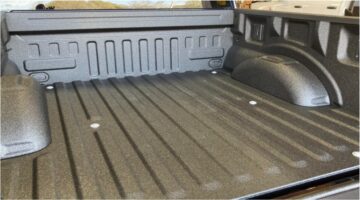Your sprint car is a complex piece of engineering and mechanics. Everything from the engine, to the suspension, to the exhaust system to the brakes makes it so you can impose your will on the race track. But never lose sight of the thing that makes your car go: not the gas pedal, but fuel. Some people don’t think the fuel pressure gauge is essential, but it’s vital. And if it’s not working, you could be in trouble. This article will discuss the fuel pressure gauge and how to troubleshoot problems with it.
Understanding Fuel Pressure
A fuel pressure gauge is a diagnostic tool that measures your fuel system’s performance. Fuel pressure gauges monitor your engine’s fuel pressure and can help prevent damage to your fuel pump and injectors. They are also useful in diagnosing horsepower loss. As a racer, you need your fuel system to operate at optimum levels so you can accelerate fast and maintain speed.
Fuel pressure gauges come in varying forms, but they are either liquid or dry gauges. Liquid gauges set the needle moving mechanism, the Bourdon tube, in what is usually glycerin liquid. Liquid fuel pressure gauges are generally tougher and more durable than dry gauges since the liquid protects the internal mechanism from shock and vibrations. Although liquid fuel pressure gauges are more popular, they tend to give comparatively inconsistent or inaccurate readings.
Safety First
To check your fuel system and fix it by replacing parts or tightening loose fittings, you will need to either work on or under your car. Even when it’s stationary, a sprint car can be a dangerous thing. As you work on your vehicle, keep the following safety tips in mind:
- If the work requires you to be on the car, avoid using a hydraulic jack.
- Use jack stands to hold the weight of the car if you are working underneath it.
- Place the car and jack stands on a stable, level surface. You should avoid any surface so that could shift or slip while you are working.
- Unfasten the battery’s ground cable from the negative terminal to avoid electrical injuries or damage.
- Work in a well-ventilated space and do not run the engine for an extended period.
- Use eye and ear protection if you are going to use power tools.
- Always have a fire extinguisher within reach.
Venting the Gauge
If you’re getting odd readings, something could be seriously wrong with your fuel system, or the liquid fuel gauge could be faulty. Before going through the more strenuous process of diagnosing and fixing your fuel pump, you should check if the fuel gauge works properly.
Liquid fuel gauges may provide inconsistent or inaccurate readings for various reasons. Fortunately, fixing this issue can be relatively simple. Your gauge should be cooled or vented anytime that the temperature of the gauge changes significantly. Venting the gauge is a quick and straightforward process:
- Start by pushing to the side the vent plug to equalize the gauge case pressure with the atmospheric pressure.
- The vent plug only needs to be pushed aside for two to three seconds to equalize the pressure.
- Don’t remove the plug; if a small amount of liquid escapes, don’t worry; the gauge will still work.
An alternative for reducing the temperature of the gauge is to cool it. You can cool a gauge by:
- Dampening a towel with cold water, then covering the gauge entirely with the damp, cold towel.
- Keep it wrapped till the gauge has cooled to room temperature.
Testing the Gauge
If venting or cooling the gauge didn’t work, you could buy a fuel pressure tester to check if your gauge might be faulty. A fuel pressure tester is a simple device consisting of a gauge and a hose ending with multiple fittings.
Fuel pumps usually fail because of ignition pressure (built up when the ignition is on), idling engine pressure, acceleration pressure, and residual pressure (pressure that remains after the key is turned off). That is what the testing gauge will determine. To use the fuel tester:
- When your engine is completely cold, open up the hood and locate the Schrader valve. It is sometimes under the fuel rail or a plastic engine cover.
- After removing the Schrader valve, use the appropriate fitting to attach the tester. Thread it entirely so that it does not leak.
- Turn the ignition on but do not start the engine. Watch the PSI reading. If there is a drop in the PSI reading, there could be a leak in the system. If the PSI reading does not change after five to 10 minutes, the system holds pressure well. This indicates the ignition pressure measurement.
- Now you can start the engine and leave it on idle. There should be a steady fuel pressure within the range advised by the manufacturer. This indicates the idling pressure measurement.
- Give the engine a few slow revs and ensure that pressure rises with the RPMs. This will give you the acceleration pressure readings. If the fuel pressure remains steady and increases with engine speed (within the manufacturer’s recommended range), then the fault is not fuel related.
- Finally, turn the engine off and remove the ignition key. After five to 10 minutes, take the PSI readings once again; these results will indicate the residual pressure. The pressure loss should be within the manufacturer’s acceptable range. If it isn’t, then there could be an internal or external leak.
Take note of what the manufacturer says the PSI range should read at each stage. Once you have that information, you can use the fuel tester readings to make a diagnosis:
- Zero Fuel Pressure– This usually implies that the pump is dead or not getting power. To fix this, start by checking the fuel pump fuse first. You can verify your findings using a multimeter.
- Low Fuel Pressure– This could mean that the fuel filter is clogged or that the pump is failing. The solution can be as simple as swapping for a new fuel filter. Alternatively, you could check for a loose or damaged gas cap because an improper tank venting could cause it.
- High Fuel Pressure– This could be a result of multiple issues. A good starting point is checking for a clogged or kinked fuel return line. The problem could also result from a bad fuel pump driver module, powertrain control module, or a faulty fuel pressure regulator.
Also, keep in mind that if the fuel pressure gauge isn’t giving the same reading as the tester, then it may be faulty and need to be replaced.
Performance Under Pressure
Without an efficient fuel system, your vehicle will lose its edge on the track. Monitor your car’s fuel performance using a combination of a fuel gauge and a fuel pressure tester to make sure everything is in check.









